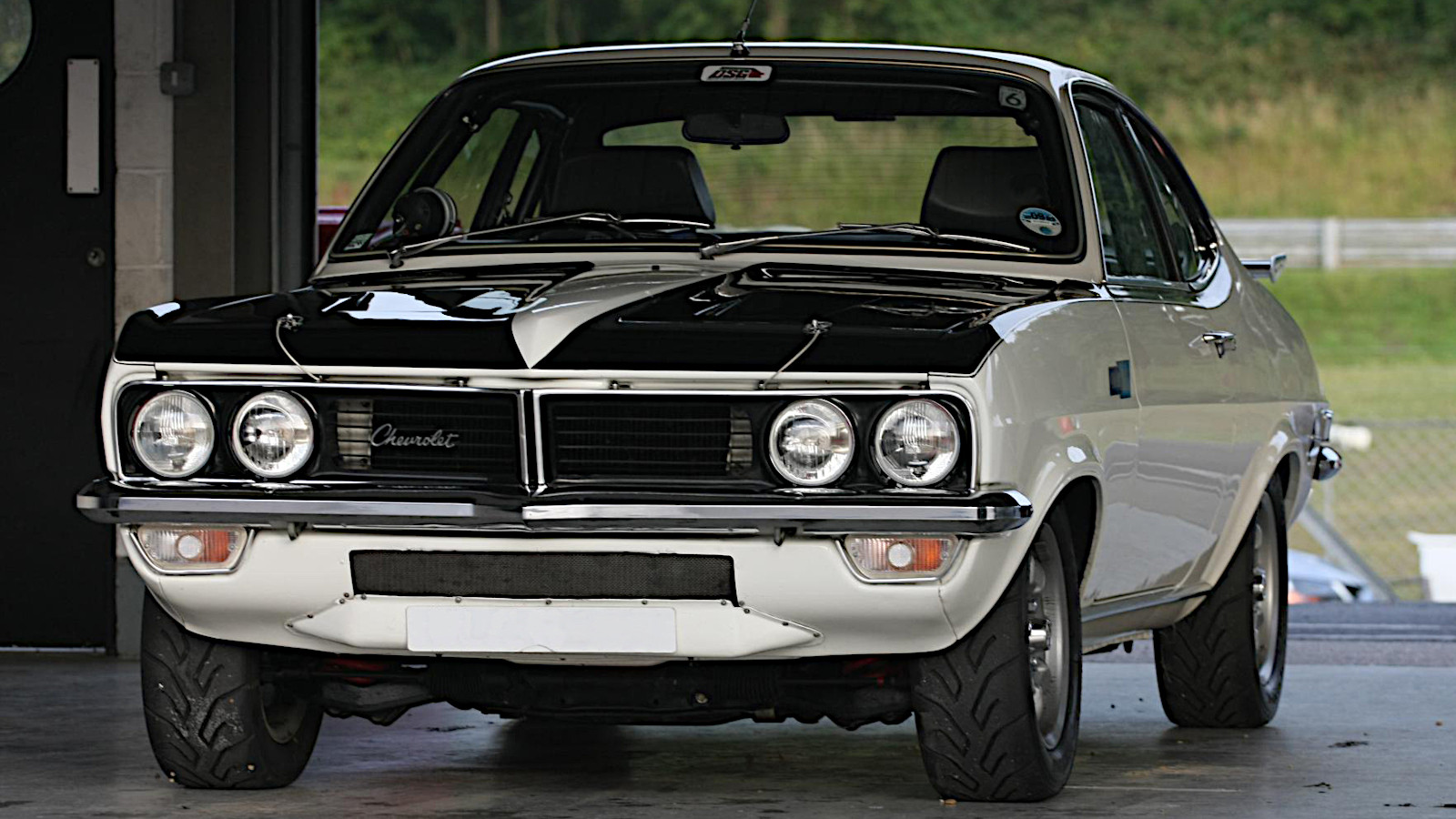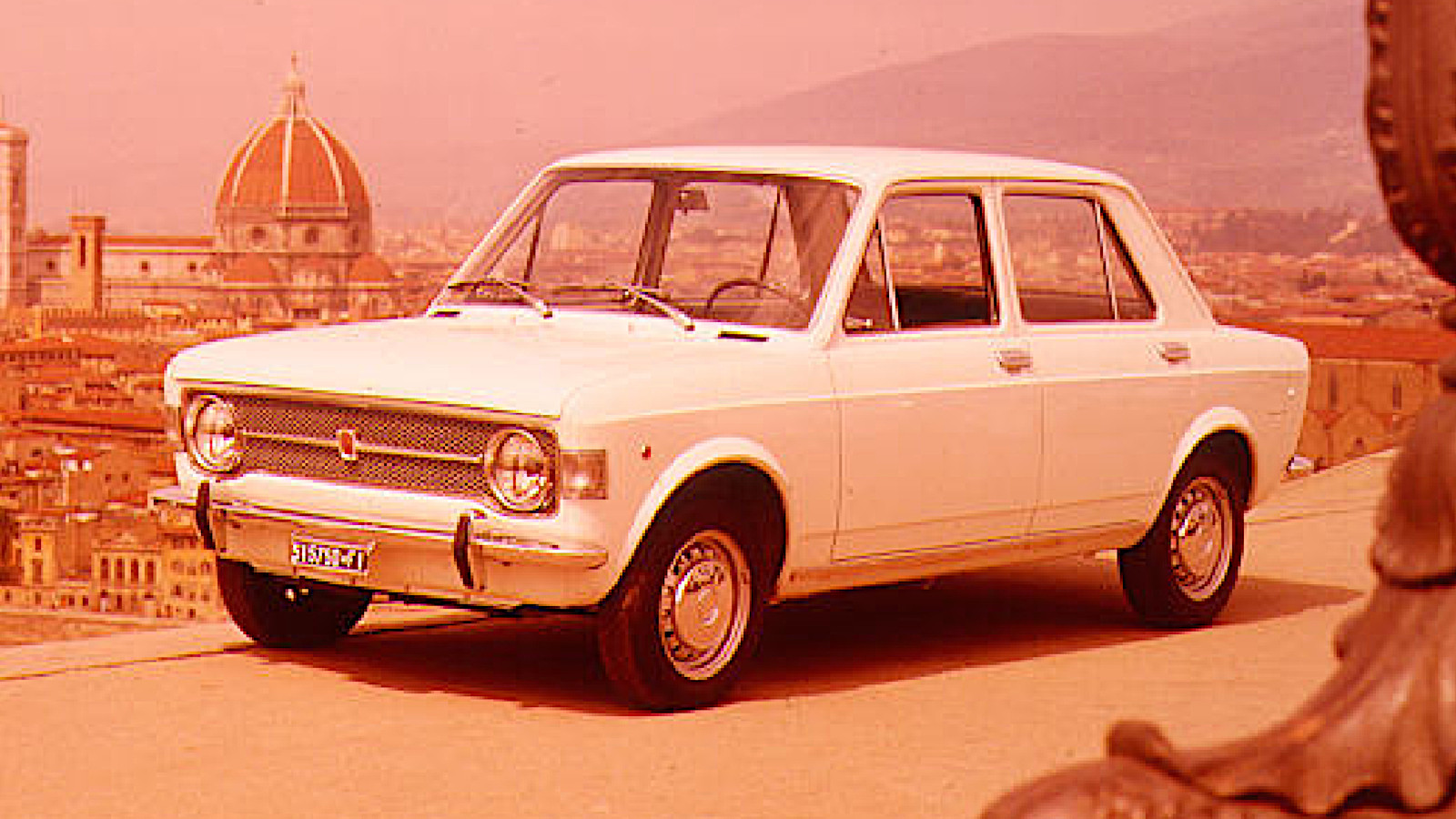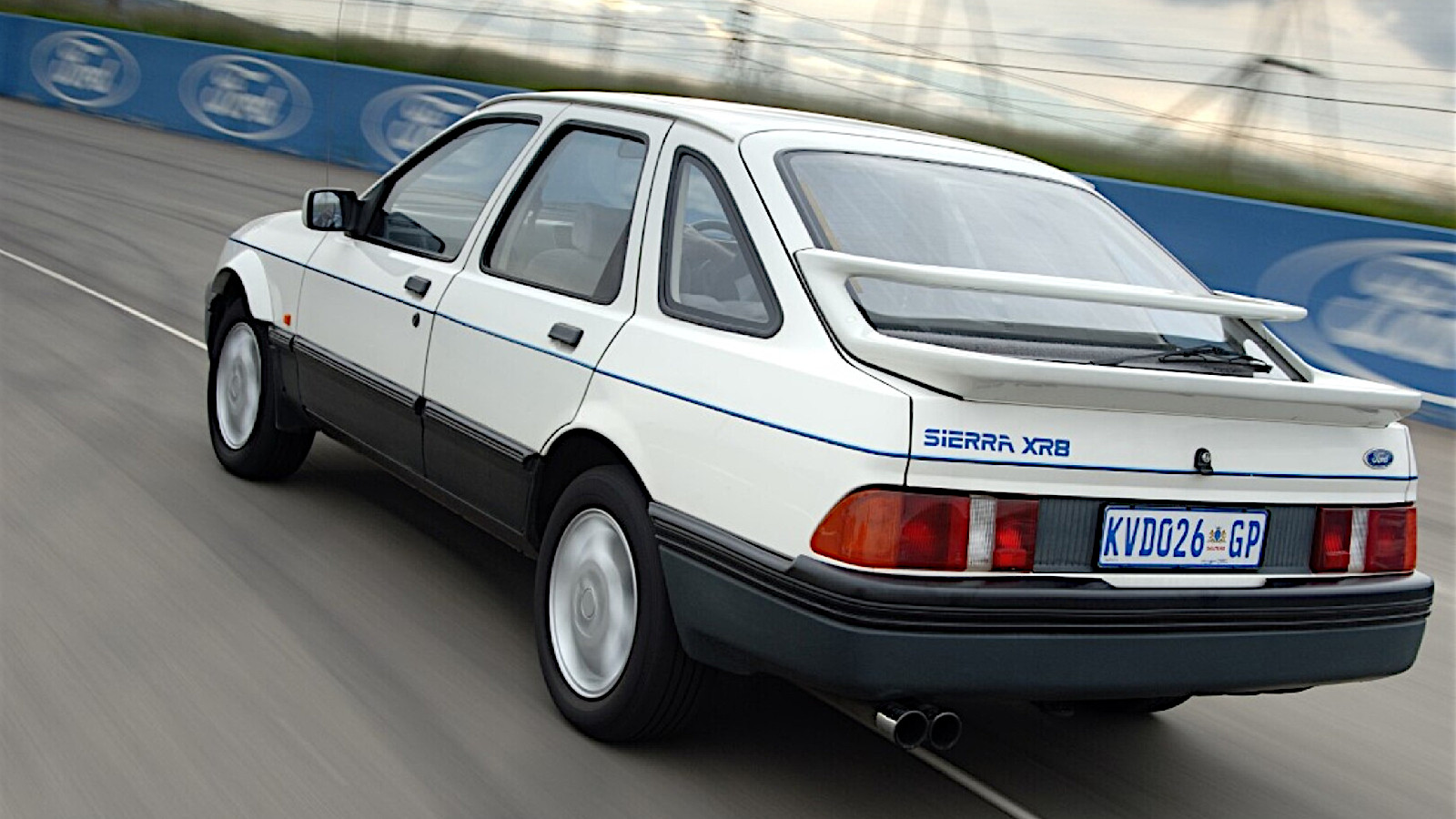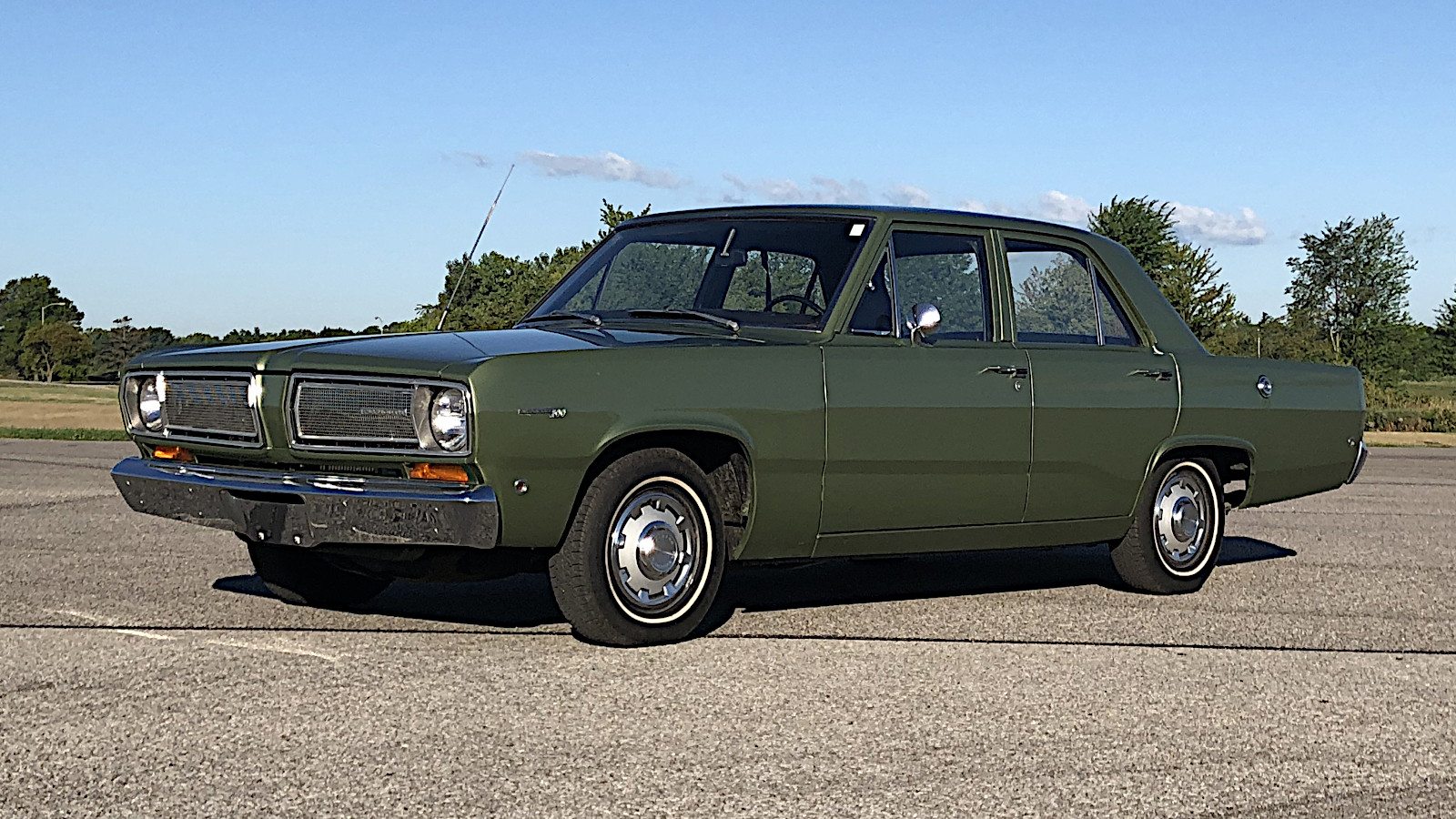-
 © Malcolm Griffiths/Classic & Sports Car
© Malcolm Griffiths/Classic & Sports Car -
 © Tony Baker/Classic & Sports Car
© Tony Baker/Classic & Sports Car -
 © Will Williams/Classic & Sports Car
© Will Williams/Classic & Sports Car -
 © Tom Gidden/RM Sotheby’s
© Tom Gidden/RM Sotheby’s -
 © BMW
© BMW -
 © BMW
© BMW -
 © BMW
© BMW -
 © Tony Harrison/Creative Commons https://creativecommons.org/licenses/by-sa/2.0/legalcode
© Tony Harrison/Creative Commons https://creativecommons.org/licenses/by-sa/2.0/legalcode -
 © Newspress
© Newspress -
 © Fiat
© Fiat -
 © Fiat
© Fiat -
 © Ford
© Ford -
 © Malcolm Griffiths/Classic & Sports Car
© Malcolm Griffiths/Classic & Sports Car -
 © Ford
© Ford -
 © Ford
© Ford -
 © RM Sotheby’s
© RM Sotheby’s -
 © Hyundai
© Hyundai -
 © Stellantis
© Stellantis -
 © Daimler
© Daimler -
 © Matti Blume/Creative Commons licence https://creativecommons.org/licenses/by-sa/4.0/legalcode
© Matti Blume/Creative Commons licence https://creativecommons.org/licenses/by-sa/4.0/legalcode -
 © Stellantis
© Stellantis -
 © John Bradshaw/Classic & Sports Car
© John Bradshaw/Classic & Sports Car -
 © RM Auctions
© RM Auctions -
 © Public domain
© Public domain -
 © GM
© GM -
 © Newspress
© Newspress -
 © Luc Lacey/Classic & Sports Car
© Luc Lacey/Classic & Sports Car -
 © David Finlay
© David Finlay -
 © Tom Wood/RM Sotheby’s
© Tom Wood/RM Sotheby’s -
 © Volkswagen
© Volkswagen -
 © Olgun Kordal/Classic & Sports Car
© Olgun Kordal/Classic & Sports Car
-
A forgotten land?
Nearly every car most of us have ever heard of was produced in Europe, Asia, the Americas or – in comparatively rare cases – Oceania.
Africa rarely gets a mention (except, of course, among Africans), but in fact a great many models have been built, and sometimes designed, on that great land mass.
So many, in fact, that we’ve had to find ways of cutting this gallery down to a manageable size.
One of those methods is to concentrate only on cars available for sale before the end of the 20th century.
Before getting going, we should point out that this means we won’t be mentioning the many African auto makers which have started up since then, or looking into the growing importance of Morocco as a car-producing nation.
The cars are given in alphabetical order.
-
1. Alfa Romeo Giulietta
Alfa Romeos were built in South Africa for many years, and special versions not sold anywhere else were sometimes developed specifically for that market.
One example of this was the Group One variant of the second-generation Giulietta (Italian-spec 2.0 Turbodelta pictured).
Its 1.8-liter Twin Cam engine was modified by Alfa specialist Sampie Bosman, who worked on the cylinder head and had the camshafts reprofiled, making it more powerful than the standard 2-liter.
Bosman was also involved in creating a homologation-special version of the GTV6 in a successful attempt to keep up with BMWs in circuit racing.
In this case, the capacity of the engine was raised to 3 liters, half a liter more than that of any GTV6 built in Italy.
-
2. Austin Apache
The car known internally as ADO16, and more generally (but quite insufficiently) as the Austin/Morris 1100/1300, was built at various plants around the world, including one in South Africa.
The South African division went further than nearly all the others, though, when it developed the Apache.
Between the wheels, it was exactly the same as other ADO16s, but Giovanni Michelotti designed a unique front end, while making the rear almost indistinguishable from that of the Triumph 2000 Mk2.
An almost identical model, built in Spain, was marketed as the Authi Victoria.
-
3. Birkin
Named after Bentley racer Sir Henry ‘Tim’ Birkin (an ancestor of the company’s Welsh-born founder John Watson), Birkin launched its S3 model at the 1983 South African Grand Prix.
The car was inspired – very strongly – by the third-generation Caterham Seven, and has been sold worldwide.
Birkin has had a strong presence in Australia for many years, but its true home is in Pinetown, near Durban, South Africa.
-
4. BMW 1800 SA/2000 SA
The first BMW built in South Africa was the 1800 SA of 1968, followed a year later by the almost identical, but larger-engined, 2000 SA.
Both were built by Praetor Monteerders of Rosslyn, which would eventually become BMW South Africa.
The cars were based on the Glas 1700 (created by a company BMW took over in 1966) but had BMW engines. They were also assembled in Zimbabwe, where they were known as BMW Cheetah.
Following a redesign by Frua, the model was renamed BMW 1804/2004 (pictured), and was later replaced by the 5 Series.
-
5. BMW 333i
The first-generation BMW M3 – exciting on the road, and very successful on race circuits and rally stages – was powered by a memorably high-revving four-cylinder engine.
It was never sold in South Africa, where the equivalent model, developed by the local BMW branch in conjunction with Alpina, was the 333i.
The engine in this unique model was the 3.2-liter version of BMW’s M30 straight-six, which usually powered larger models and was never offered in any 3 Series other than this one.
Several production numbers and dates have been quoted, but according to Alpina just 204 were built between 1985 and 1987.
-
6. BMW 745i
It’s easy to say that there was an African version of the high-performance 1980s 7 Series and leave it at that, but in fact the story is rather more complicated.
The European 745i was powered by a turbocharged straight-six engine which could not be used in right-hand drive vehicles because the space required for the turbo was already taken up by the steering column.
For the South African market, where right-hand drive is the norm, BMW instead used the naturally aspirated (and more powerful) 3.5-liter M88 straight-six, also found in this form in the M635CSi and M5, and originally used in the M1 sports car.
This 745i was approximately as rare as the 333i mentioned earlier, with fewer than 250 produced from 1984 to 1987.
-
7. Chevrolet Firenza
This car was simply the British-designed Vauxhall Firenza, assembled in South Africa and mostly powered by GM four-cylinder engines (including a 2.5-liter Chevrolet unit rather than Vauxhall’s 2.3-liter slant-four).
The exception was the wildest Firenza ever put into production for road use.
Known variously as the Can-Am or the Little Chev, it was fitted with a 5-liter Chevy V8 which gave it a reported 0-62mph time of 5.4 secs – a breathtaking figure for 1973.
Since it was a homologation special, just 100 had to be built – hence the advertising tagline ‘Only you and 99 others’.
-
8. Dodge Avenger
The Hillman Avenger (pictured) was assembled briefly in South Africa in the mid 1970s.
It started out as the Dodge Avenger, powered by a 1.6-liter Peugeot engine and produced only in 1975.
A year later, it was mildly transmogrified into the Chrysler Avenger, which had the similarly sized Rootes engine used in Avengers sold in other markets.
Production stopped a short time later, making the African Avenger almost certainly the rarest of them all.
-
9. Fiat 128
Somaca was established in 1959 to build Fiats and Simcas in Morocco, and later became involved with other brands.
One of its most popular models was the brilliant little Fiat 128, which had gone into production in Italy in 1969.
The 128 was also one of several Fiats manufactured under license in Egypt by El Nasr.
Remarkably, El Nasr was still producing 128s up to the moment it closed in 2009.
-
10. Fiat Uno
Two of the many production sites for the Uno around the world were located at opposite ends of the African continent.
One was owned by Somaca, which at the time was still majority owned by Fiat.
Somaca, in Morocco, is now almost entirely in the hands of Renault, so we’re unlikely to see it building Fiats of any sort again.
The Uno was also manufactured in South Africa, not by Fiat itself, but by Nissan.
-
11. Ford Bantam
The Bantam was a small, car-based pick-up truck (a type of vehicle known locally as a ‘bakkie’) produced in South Africa across three generations.
To begin with, the small car in question was the Mk3 Ford Escort, the first model of that name with front-wheel drive.
By 1990, Ford’s South African operations had been merged with those of Mazda, so it shouldn’t come as too much of a surprise that the Bantam launched in that year was based on the Mazda 323.
As previously stated, we’re generally avoiding 21st-century stories here, but for the sake of completeness we should add that the third Bantam, launched in 2002, was based on another Ford – in this case the fifth-generation Fiesta.
-
12. Ford Capri
The first-generation Capri was manufactured briefly in South Africa in the early 1970s.
One version, a homologation special called the Perana, was the only V8 Capri officially sold anywhere in the world.
The engine was Ford’s 5-liter Windsor, modified and installed by Basil Green, who also adapted the rest of the car so that it could cope with the sudden boost of power.
Ford not only sanctioned the car but gave it a full warranty, and later invited Green to become one of its dealers, which he accepted.
-
13. Ford Model T
The first Ford dealerships were established in South Africa in 1905, so motorists in that country were almost immediately able to buy the Model T when it was introduced three years later.
In 1923, close to the end of the T’s production run, the Ford Motor Company of South Africa was created.
A year later, the same business began building Model Ts at a factory in Port Elizabeth, using parts imported from Canada.
According to Ford, this was its 16th car plant outside North America, and ‘the first assembly line of any kind in Africa’.
-
14. Ford Sierra
African production of the Sierra took place in Pretoria, South Africa’s capital, for almost the entire lifetime of the model.
As with the Capri, South Africa was the only country to offer a Sierra with a V8 engine.
The XR8, as it was known, was fitted with a slightly updated version of the 5-liter Windsor which Basil Green had used in the Capri Perana.
Around 250 were built, some of which have since strayed a long way from their home country.
-
15. GSM Dart
It’s safe to describe the Dart as a South African car, even though the first body came out of the mold when GSM’s founders were working in the UK.
Known in that country as the Delta (because the Dart name couldn’t be used), the little sports car was unusual for the period in having a fiberglass body, though not unique – the even rarer Protea, built in Johannesburg in the late 1950s, had one, too.
Bob van Niekirk’s chassis was so well designed that the Dart/Delta was both a nimble road car and a very competitive racer.
A later GSM, the Flamingo, was intended to have a Ford V6 engine, but since this never became available it was produced instead, like its earlier relative, with a variety of four-cylinder units.
-
16. Hyundai Accent
The Accent was the first of several Hyundais built by two quite separate African companies located approximately 5000 miles apart.
In one case, Accents were exported from South Korea to Mozambique, slightly disassembled, transported to Botswana and put back together there before being sent to dealers throughout southern Africa, all in the interest of keeping duty payments as low as possible.
That arrangement fell apart when the company expired in 2000.
On the other side of the equator, the Accent was also built in Egypt by the Ghabbour Group, which still produces Hyundais (along with Mazdas, Great Walls and others) today.
-
17. Jeep Cherokee
Arab American Vehicles was established in Egypt in 1977, and began manufacturing military Jeeps the following year.
In the 1990s, it expanded its operations by building civilian vehicles, all of them designed elsewhere.
One example was the second-generation Jeep Cherokee, which went into production in the US in 1983.
Information about AAV’s involvement varies depending on which source you look at, but according to the company’s own website it began building Cherokees in 1992, and continued doing so in later generations.
-
18. Mercedes-Benz W120
By common consent, the first car to appear in South Africa, back in 1896, was a Benz Velo, and descendants of that model are being manufactured in the country today.
The process began in 1958, when Car Distributors and Assemblers of East London (now named Mercedes-Benz South Africa) added the Mercedes W120 to its already considerable portfolio.
This also applied to the larger-engined W121 and the just plain larger W180, but we’re naming the W120 because Mercedes launched it in Germany slightly before the others.
In 1956, imported W120s were being converted locally into ‘bakkies’, a full six decades before the introduction of Mercedes’ X-Class pick-up.
-
19. Nissan 1400
Based on the second-generation Nissan Sunny (known outside Japan as the Datsun 1200 and later Datsun 120Y), the 1400 was a half-ton pick-up built by Rosslyn Motor Assemblers, which is now called Nissan South Africa.
This ‘bakkie’ was launched in 1971, and was an immediate hit in its class.
Production reached 250,000 units in 2003, and carried on until the 1400 – still more or less in its original form, though with several developments – was finally canceled five years later.
It was then replaced by the Nissan NP200, a rebadged Dacia Logan pick-up.
-
20. Opel Vectra/Vauxhall Cavalier
The vehicle known in the UK as the third-generation Vauxhall Cavalier and elsewhere as the Opel Vectra A was the first car (as opposed to pick-up truck or minibus) built in 6th of October City by General Motors Egypt.
This happened in 1993, five years after the launch of the car in Germany and two before it was replaced.
GME then switched to production of its successor, the Vectra B.
In the checkered (and, from 1986 to 2004, interrupted) history of General Motors South Africa, no Vectras appear to have been built, though race versions did compete in the national Touring Car Championship.
-
21. Peugeot 504
There’s absolutely no reason to believe that Peugeot designed the 504 specifically to be successful in Africa, but it was so popular there that you could be forgiven for thinking this was precisely the intention.
Its ability to cope with almost any road conditions was shown dramatically on the 1975 Safari Rally in Kenya, when a 504 beat one Lancia Stratos by more than half an hour, and another by nearly two.
If anything did go wrong, it could easily be fixed. In 2013, it was claimed that “even in West Africa’s smallest villages, it is possible to get a broken-down 504 back on the road within an hour”.
Over time, the exact extent of African 504 production has become hazy, but there’s evidence to suggest that it took place in Egypt, Kenya, Nigeria and South Africa.
-
22. Plymouth Valiant
Right-hand-drive versions of the first-generation Valiant went into production in South Africa in 1960 as the Valiant (without the Plymouth name) and the De Soto Rebel.
The same process continued for future generations, with great success.
In fact, according to usually reliable sources, the Valiant was the best-selling car in South Africa from 1966 to 1968, achieving 15,026 sales in the latest of these years and beating the considerably cheaper Volkswagen 1500.
Valiant production continued in the country until 1980, though from 1972 onwards the factory was building Australian Valiants rather than American ones.
The photo shows a US-spec 1968 Valiant
-
23. Ramses
The Ramses was the first car ever manufactured in Egypt.
It was based on the German NSU Prinz, but understandably simplified to take into account Egypt’s complete lack of car-building experience.
Equally understandably, it was a source of national pride when it was introduced in 1958.
That soon changed when local production of Fiats began and it became clear that the Ramses, while historically important, wasn’t actually very good.
-
24. Ranger
Ranger, one of GM’s least well-known brands, produced two generations of car from 1968 to 1978.
This first, which was replaced in 1973, was built in South Africa, Belgium and Switzerland, three countries you might not expect to see being brought together in this context.
It was based on the Opel Rekord, but the African version was mechanically slightly different from the Europeans, and was the only one with right-hand drive.
The second Ranger was built only in Europe, and had no direct South African equivalent.
-
25. Sao Penza
The Penza is unique in this list because, although it was built in Africa, it was never sold there – or, at least, not with that name.
It was in fact a fifth-generation (and therefore out-of-date) Mazda 323 built in South Africa by Samcor.
Its only market was the UK, where it was much cheaper than the current 323, but also not as good.
In its brief life, which lasted from 1991 to 1993, hardly anybody bought one, perhaps partly because it was called Sao Penza.
-
26. Toyota Corona
The first Toyotas assembled in Africa were, from June 1962, the Stout light truck and, from May 1963, the pick-up version of the Tiara, as the second-generation Corona was known in export markets.
In May 1966, the next Corona (pictured) became Toyota’s first passenger car built on the continent.
It was produced in Prospecton, near Durban, by Motor Assemblies, which would later become known as Toyota South Africa Motors, and which eventually stopped building Coronas in 1980.
Ghana became the second African country to assemble the Corona in July 1969.
-
27. Vauxhall Cresta
The fourth and last Vauxhall Cresta, codenamed PC, was revealed at the London Motor Show in October 1965, and its upmarket derivative, the Viscount (pictured), went on sale the following summer.
General Motors South Africa was not far behind, beginning assembly of the Cresta in April 1966 and the Viscount four months later.
Both models were powered by an existing straight-six engine which had been taken out to its maximum reasonable capacity of 3.3 liters.
There is a story that some South African Viscounts were fitted with a 5.2-liter Chrysler V8, but this has been met with disbelief in some quarters, and now seems impossible to verify.
-
28. Volkswagen Beetle
The VW Type 1, known around the world as Beetle or Bug, among other unofficial names, was produced in several countries, two of them African.
Volkswagen of South Africa began production in August 1951 at its factory in what was then known as Uitenhage but is now called Kariega.
Local development did not exactly follow what was happening in Germany, so South African Beetles are not always quite the same as those produced elsewhere.
The Beetle was also assembled for many years in Nigeria, where one of its nicknames was Ìjàpáá, the Yoruba word for ‘tortoise’.
-
29. Volkswagen Citi Golf
The first-generation Golf was so popular in South Africa that the local VW branch decided to keep it in production after it had officially been replaced.
This might have seemed at the time like a temporary measure, but in fact it continued for a quarter of a century, after the parent company had introduced the sixth Golf.
The Citi Golf, as the car was known, was finally discontinued in 2009.
Total production was 377,484, well over double the number of South African Mk1s built in an admittedly much shorter period.
-
30. Wolseley 1000
Like the Riley Elf of the same period, the Wolseley Hornet (pictured) was an upmarket derivative of the Mini produced from 1961 to 1969.
Both models were immediately identifiable by their three-box sedan bodies, not used on any other Mini, and by their ornate, chrome-festooned front ends.
In 1967, Leyland South Africa produced a halfway-house version called the Wolseley 1000, which was the same shape as the regular Mini but had the more spectacular frontal design.
It was replaced after two years by its exact opposite. The Mini Mk3, which had a similarly short life, had a regular front end, but the three-box body of the Elf and Hornet.
